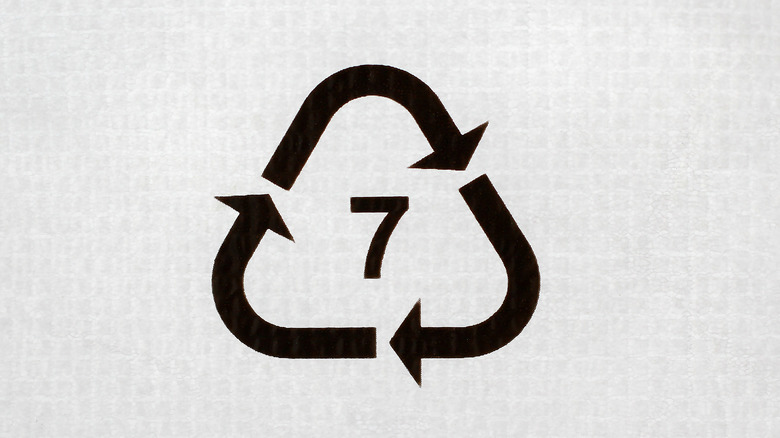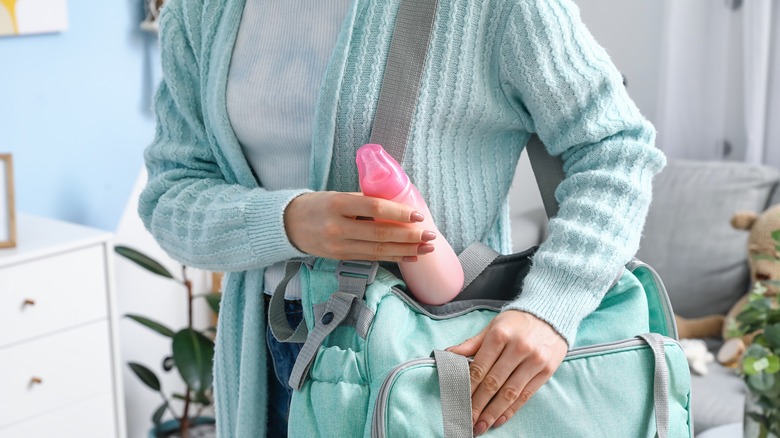Why You Should Avoid Food Packaging Made Out Of Plastic #7
This may not come as a surprise, but just because a piece of packaging has the green recycling symbol on it doesn't mean it can be recycled. Although many can be, the recyclability of a plastic item depends on which type of plastic it is and what types your city's recycling programs accept. The real purpose of those little green triangles on your plastic containers is to indicate what kind of plastic it is so you can determine the best way to dispose of it (via PBS). However, what tends to go unconsidered is the safety of these different types of plastic, not only for the well-being of the planet, but for yourself.
There are certain types of plastics that can contaminate your food and water with damaging chemicals and toxins. To know which types are safe to use for food storage, check the number labeled inside of the green recycling symbol on the packaging of your plastic food containers. Generally, plastic #1, plastic #2, plastic #4, and plastic #5 are considered safe, while plastic #3 and #6 contain known toxins such as lead and styrene, and should not be used to store food. But this leaves one final type of plastic out: plastic #7, mysteriously labeled "other" underneath its green symbol.
Plastic #7 can come with dangerous side effects
Commonly used to make 3- and 5-gallon water bottles, baby bottles, children's sippy cups, and certain food containers, plastic #7 is a catch-all category for plastics that contain polycarbonate. The category has sparked controversy since studies started documenting its potential health effects. One 2020 study from the National Institute of Environmental Health Sciences identified bisphenol A (BPA), a building block of polycarbonate, as an endocrine disruptor. As its name suggests, endocrine disruptors interfere with the normal functions of the endocrine system. This system regulates all of the biological processes in your body, including your hormones, brain development, reproduction, metabolism, and the nervous system (via U.S. Environmental Protection Agency).
While the plastic industry has abided regulations and provided codes for you to identify what plastics your products are made of, it's up to you to understand them. Not only is plastic #7 not recyclable, but due to its commonality, there is a risk of chemical leaching that could put you into contact with BPA and its dangerous health effects (via PBS). For this reason, you should not use plastic #7 for food storage. So, next time you grab a baggie for the leftover half of your sandwich or package up your pasta for later, it's important that you check the recycling label.

